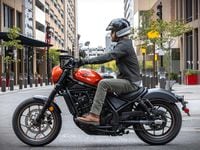The look is older than Honda itself. The elegant, flowing curves and clean detailing on Honda's Shadow Aero stretch back to pre-war years. In the 1930s, what we would now call "high-tech" design took its inspiration from the evolving science of aerodynamics. Smoothly rounded designs pioneered on aircraft were applied to cars, trains and even appliances. Luxury automobiles developed long, low, streamlined contours. The style spoke of elegance, comfort and speed.
The motorcycle beneath the retro styling of the Aero is very similar to the extremely popular Shadow A.C.E. (American Classic Edition). It uses a similar chassis, and its power comes from the same liquid-cooled, 1099cc, 45-degree, single-crankpin V-twin engine. However, the Aero has a longer, lower appearance and a host of unique styling touches that immediately distinguish it from the A.C.E. The wheelbase stretches an additional 1.1 inches to 66.1 inches; and full fenders, a long, classically shaped 4.2-gallon fuel tank, and fat whitewall tires accentuate the bike's length. But the sense of expanse is probably heightened most by the long two-into-one exhaust system, with a fat single muffler that draws your eye back past the rear fender, where it culminates in a subtle fishtail.
The Aero is the first Honda ever to wear rider floorboards, and these polished-alloy items lay almost flat to contribute to the impression of length. The low, saddle-style seat and short-rise, pullback handlebar further accentuate the Aero’s length. Another essential component of the look is the stretched chrome headlight, which houses the speedometer. Honda has never felt that speedometers belong down and out-of-view on the fuel tank, but setting them atop the fork crown (like the Spirit or A.C.E.) interrupts the lines of a cruiser. So, as with the first bikes it imported into this country, Honda dropped it into the headlight shell. The elegant ivory-faced instrument features nostalgic, yet readable numerals. Operated electronically, it has no cable to clutter the bike, but the LCD odometer/tripmeter (which all of the new designs now have because they are small, light, and hard to tamper with) sounds a slightly discordant note.
Viewed from above, the Aero also looks fairly wide (though it’s no Suzuki Intruder 1500). The beefy fenders, wide saddle and big gas tank promise a broad, comfortable mount. The 33.2-inch-wide handlebar spreads outward from its mount, then turns back at its ends, for a sort of mild beach-cruiser bend. The rider’s position is a bit like sitting in a desk chair, with your feet almost flat on the footboards, instead of the more heels-low angle adopted by most other floorboards. The relationship of the seat and handlebar permits average-sized riders to adopt whatever position they prefer; leaned-back, hunched forward or bolt-upright. We admit to being slightly surprised that the wide handlebar and turned-back grip angle didn’t load our arms more heavily at high speeds. You had to counter a bit more pressure and grip slightly harder than on the other 1100s, but it didn’t become a major comfort issue at high speeds.
Though it’s splendid around town, our two-day ride on the bike prompted modest complaints from all riders, regarding the floorboard position. Though we were divided on whether they were too high or too flat, everyone wished they were somehow different on long rides. Others also wished for more room to scoot backward on the saddle. Though it’s not plushly padded, the saddle is wide enough—almost 16 inches—and shaped so that two or three hours didn’t leave us saddle sore. Passengers get a comfortable position, but the removable passenger pad is unexceptional and, in our experience, will cause annoying noises to develop behind you on longer, two-up jaunts.
That pretty well sums up our complaints about the way the Aero rides. We sort of expected to be whining about vibration here, before we rode the bike. Unlike the offset-crankpin design of the Spirit, which can be designed to cancel most of a 45-degree V-twin’s vibration, the single-crankpin layout usually means that the engine shakes. That’s true of the Aero, but its rubber engine mounts and other factors limit how much vibration reaches the rider. You can feel some vibration at any speed. At highway speeds, you feel some shake through the floorboards (more on the right than the left), though some vibration gets soaked up by the floating design of the pads where your feet rest. At more aggressive highway speeds, the tank borders on discomfort if you press your legs against it firmly. The buzz through the handgrips is subdued, and objects in the mirrors are recognizable below 80 mph or so. The saddle only shivers uncomfortably at high rpm, such as during hard acceleration. Under normal cruising conditions vibration rarely asserts itself, and it’s slightly smoother than the A.C.E.
Honda did an excellent job of choosing suspension rates, and the ride is firm but rarely harsh. Only large, sharp-edged bumps jolt you—mostly through the rear end. Rolling bumps slip under you with less violence than most other machines. And the effective damping selections make the bike steadfast when braking hard, dipping into switchbacks on a mountain road, or dodging errant drivers in the city. Because the floorboards are fairly flat and they taper down at their rear (which might normally drag first), you can lean the Aero over more than most floorboard-equipped bikes before things get noisy and the boards start to fold up. Though its extra length and weight mean that it can’t respond to steering inputs as readily as the A.C.E., the Aero feels just as comfortable when heeled into a corner and even steadier when you confront crosswinds and road irregularities.
It also remains manageable and well-balanced when tip-toeing through a tight spot. The turned-back design of the handlebar conspires to make the grips collide with your knees during tight turns at low speeds.
The Aero uses an engine that, except for the first- and fifth- gear ratios, is identical to the Shadow A.C.E., which is relatively slow for an 1100. Honda had said that the Aero makes about five more horsepower thanks to its exhaust system design, but since it also weighs more than 40 pounds more we expected to be a bit underwhelmed by the engine’s performance. We were therefore surprised when the Aero pulled away not only from the A.C.E., but also (very slightly) from the Spirit in top-gear roll-ons. The difference is shorter gearing in the Aero’s fifth-gear ratio. The Aero’s top-gear ratio (which is .8:1 compared to the .76:1 of the A.C.E.) combined with the added power, gives it a larger edge than we’d expect. All other intermediate ratios and rear tire sizes are the same. The extra rpm, compared to both the A.C.E. and Spirit, gives the Aero the best top-gear giddy-up of any of the 1100 Shadows. Most of our highway passes of slower traffic were conducted in top gear, yet the Shadow retro-rocket feels and sounds relaxed on the highway.
The Aero sounds like a hot rod. The deep-throated blat emanating from the exhaust system should come from a bigger motorcycle. We rate it as the most pleasing exhaust sound of any stock V-twin. Throttle response is crisp and precise, with no lean spots or hesitation anywhere. The engine feels more willing when you open the throttle than the A.C.E., and power swells steadily from just off idle to the horsepower peak just below 5000 rpm. The only payback comes in fuel economy. At an average of 35.1 mpg, the Aero’s fuel mileage was consistently worse than the other three 1100s along for the same ride. But we had no other engine-related grumbles. It starts readily, often without choke, and warms promptly. Another surprise was that the Aero was significantly less cold-blooded than our A.C.E., which wouldn’t run smoothly for a mile or so when cold. The Aero offers adequate off-idle power and flywheel effect to get rolling smoothly with little clutch slippage.
The wet clutch offers a light pull and progressive engagement. Only one rider ever experienced any shifting problems, but his style is to upshift with his toe rather than the heel portion of the lever on floorboard-equipped bikes. Some lever adjustment probably would have ended his occasionally balked first-to-second gear change. We had no complaints about lash or shaft-induced jacking.
With a twin-piston caliper up front and those wide tires, you can coax some pretty respectable hard stops out of the Aero, with little fade. Control is good at both ends, and the long wheelbase and controlled suspension take some of the excitement out of panic stops.
Of course, the major issue for this motorcycle is its ultra-retro styling. Few details disturb the almost flawless execution of the look. The typically excellent paint (produced along with the rest of the bike by Honda’s facility in Marysville, Ohio) and deep, smooth chrome complete the overall sense of quality. A clear plastic lens enhances the multi-reflector headlight’s retro appearance. Chrome heat shields give the header pipes a beefy appearance that matches the rest of the system and the bike. Chrome fender rails seem to have sprung from the era that the designers sought to evoke, even though the front ones are purely cosmetic. The chrome covers on the preload-adjustable shocks also remind you of bikes from the same period. The rear of the tank matches the width of the seat. Chromed covers and polished fin edges complete the engine, and Honda offers optional chrome trim to dress up the radiator. The handlebar switch housings, master cylinder and fork crown are polished. The as-cast, rear-wheel drive housing is one of the few unfinished pieces on the bike. The protruding license plate light interrupts the otherwise clean lines of the back end of the bike. One of our biggest cosmetic complaints was grease thrown out from the rear wheel, which stained the rear tire’s whitewall.
Cleaning the two-inch-wide whitewalls will be one of the few chores the Aero owner must attend to. Checking the uniquely shaped (and therefore probably expensive) battery under the left side panel is easy. The air filter is under the saddle, and easy to remove for cleaning or replacement. Though the bike needs to be upright when checking oil, you can reach the dipstick from the saddle, so one person can do it alone. A spin-on filter resides under the engine. Self-adjusting valves and cam-drive chain mean there is little else to do to keep your engine fresh and healthy. The shaft final drive means that no chain adjustment or lubrication is required. A flat tire would be a problem, as on most cruisers with wire wheels, and removing the rear wheel requires the muffler to come off.
We expect to see plenty of aftermarket support for the Aero very soon, with a few A.C.E. accessories that will fit, as well. Honda has a windshield, radiator guard, backrest, luggage rack, extensions for both fenders and leather saddlebags. We anticipate a long list of aftermarket offerings by the end of the year.
At first blush, adding one more Shadow 1100 to its line, especially when it already has the most popular metric cruiser in the country, seemed like a strange thing for Honda to do. But after you have looked at and ridden the Aero, it makes perfect sense. Taking a giant step back into the past and a large step forward in performance, it moves away from all offerings in the 1100cc range. Its looks alone should lure thousands of potential buyers, and those who bite aren’t likely to be disappointed with the way it works.
This article was originally published in the April 1998 issue of Motorcycle Cruiser.










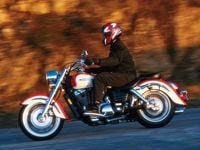
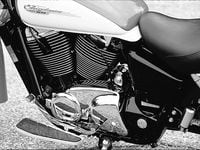
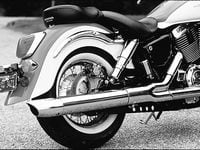
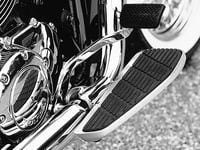
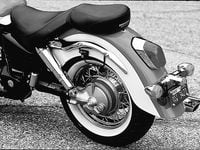
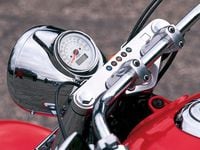
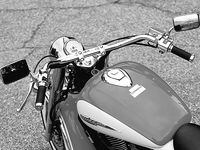
/cloudfront-us-east-1.images.arcpublishing.com/octane/OQVCJOABCFC5NBEF2KIGRCV3XA.jpg)
/cloudfront-us-east-1.images.arcpublishing.com/octane/F3O2DGLA4ZBDJGNVV6T2IUTWK4.jpg)
/cloudfront-us-east-1.images.arcpublishing.com/octane/ZXYQE3MHLFDSPKNGWL7ER5WJ4U.jpg)
/cloudfront-us-east-1.images.arcpublishing.com/octane/RDF24VM7WVCOBPIR3V3R4KS63U.jpg)
/cloudfront-us-east-1.images.arcpublishing.com/octane/W7RSIBFISNHJLIJESSWTEBTZRQ.jpg)
/cloudfront-us-east-1.images.arcpublishing.com/octane/AERA26ENRNBW3K324YWCPEXYKM.jpg)
/cloudfront-us-east-1.images.arcpublishing.com/octane/YWX3YX7QBBHFXFDMEEEKRG4XJE.jpg)
/cloudfront-us-east-1.images.arcpublishing.com/octane/I7OKI53SZNDOBD2QPXV5VW4AR4.jpg)
/cloudfront-us-east-1.images.arcpublishing.com/octane/IH52EK3ZYZEDRD3HI3QAYOQOQY.jpg)
/cloudfront-us-east-1.images.arcpublishing.com/octane/K2FSAN7OWNAXRJBY32DMVINA44.jpg)
/cloudfront-us-east-1.images.arcpublishing.com/octane/G4XK7JL24FCUTKLZWUFVXOSOGE.jpg)
/cloudfront-us-east-1.images.arcpublishing.com/octane/JJNXVAC27ZCDDCMTHTQZTHO55Y.jpg)
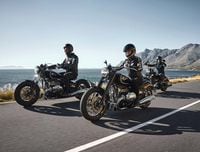
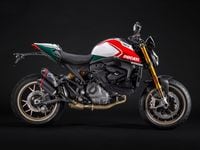
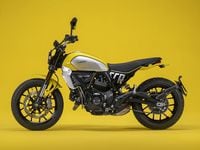
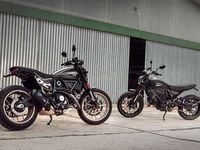
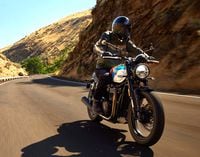
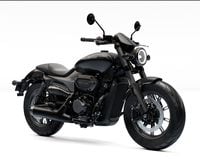
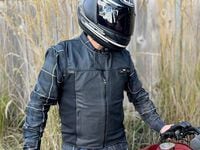
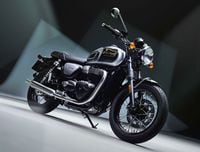
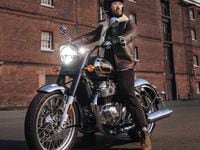
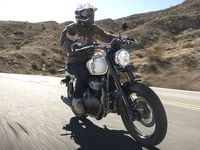
/cloudfront-us-east-1.images.arcpublishing.com/octane/3VSTLPKOHNFTRJTIAAXDPGCPA4.jpg)
